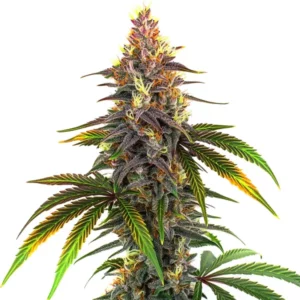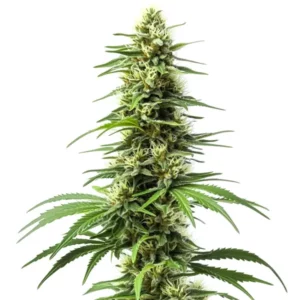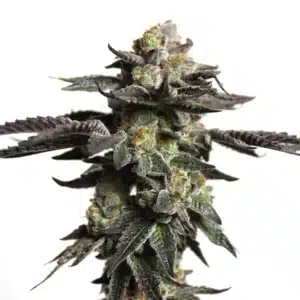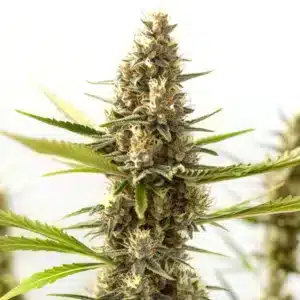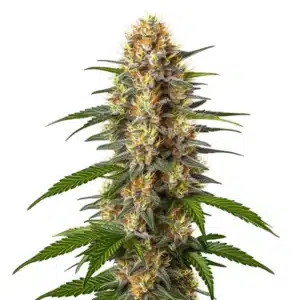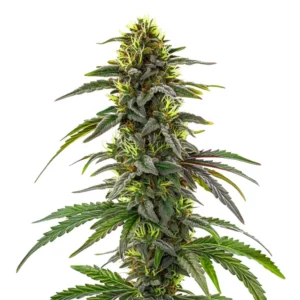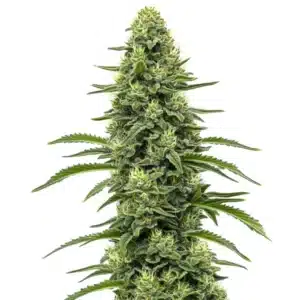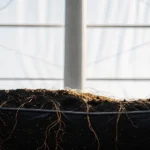
Balancing Transpiration and Root Uptake in Cannabis Growing
For cannabis growers, achieving the right balance between transpiration and root uptake is crucial. When these processes align perfectly, plants grow strong and healthy. Unfortunately, environmental factors can easily tip the scales, leading to over or under-watering issues.
Transpiration is the process where water evaporates from the leaves. This process cools the plant and helps draw water from the roots. Root uptake, on the other hand, is how roots absorb water and nutrients from the soil. Balancing these processes ensures that your cannabis plants remain hydrated without drowning or drying out.
Recommended Strains
CBD Critical Mass (1:1)
|
|
CBD | 5% (Low) |
|
|
Type | CBD Feminized |
|
|
Yield | Medium |
|
|
Phenotype | 60% Indica / 40% Sativa |
CBD Critical Mass Auto
|
|
CBD | 12% – 15% (Medium) |
|
|
Type | CBD Autoflowering |
|
|
Yield | Low |
|
|
Phenotype | 80% Indica / 20% Sativa |
One way to achieve this balance is by choosing the right cannabis strains. For instance, the CBD Critical Mass strain from Blimburn Seeds is known for its robust growth and resilience. This strain can handle fluctuations in water levels better than more delicate varieties.
Cannabis Plant Water Management Techniques
Effective water management starts with understanding your plant’s needs. Factors like temperature, humidity, and soil type play significant roles. For instance, sandy soils drain faster than clay, affecting how much water your plants need. Adjust your watering schedule based on these factors.
Mulching is a simple technique that helps retain soil moisture. Applying a layer of organic material on top of your soil can prevent water evaporation. This practice is especially useful for outdoor growers dealing with hot climates.
Balancing transpiration and root uptake in cannabis growing involves more than just watering. It’s essential to consider the microenvironment of your grow space, including air circulation and light exposure. By optimizing these factors, you can enhance the efficacy of your cannabis plant water management techniques.
Incorporating advanced tools like soil moisture sensors can provide real-time data, allowing for precise adjustments. These insights help in tailoring your watering schedule to meet the specific needs of each growth phase, ensuring a harmonious balance between transpiration and root uptake.
Optimizing Root Water Uptake in Cannabis
Roots are the lifeline of your cannabis plants. To optimize root water uptake, ensure your soil has the right pH and nutrient content. Regularly test your soil and amend it as needed. A balanced soil environment supports healthy root development.
Another way to boost root uptake is by using beneficial microbes. These tiny organisms help break down organic matter, making nutrients more accessible to the roots. Products containing mycorrhizal fungi can be particularly helpful.
Knowing the specific needs of your cannabis strain can further enhance root uptake. Some strains may require more frequent nutrient adjustments, while others thrive with minimal intervention. Tailoring your approach to the strain’s natural preferences is key to optimizing root water uptake in cannabis.
Additionally, maintaining a consistent watering routine can prevent stress on the root system, which is vital for sustaining robust growth. This consistency aids in balancing transpiration and root uptake in cannabis growing, ensuring your plants are well-nourished and healthy.
Promos & Deals
Transpiration Control Strategies for Cannabis
Transpiration rates can be controlled by managing environmental conditions. High humidity slows down transpiration, while low humidity speeds it up. Using a hygrometer can help you monitor and adjust humidity levels in your grow space.
Leaf surface area also affects transpiration. More leaves mean more transpiration. Pruning excess foliage can help manage this process, especially in dense plant setups. This ensures that your plants do not lose water too quickly.
Strategic airflow management is another vital component of transpiration control strategies for cannabis. Fans can be used to simulate natural wind patterns, promoting balanced transpiration rates and preventing mold growth. This approach is particularly beneficial in indoor growing environments.
Incorporating shading techniques during peak sunlight hours can also mitigate excessive transpiration. By reducing direct light exposure, you create a more stable environment that supports the delicate balance between water uptake and loss, promoting overall plant health.

Balancing Water Uptake and Loss in Cannabis Cultivation
The balance between water uptake and loss is a dynamic dance. Monitor your plants for signs of stress. Wilting, yellowing leaves, or stunted growth can indicate water issues. Adjust your watering schedule as needed to address these symptoms.
Automated irrigation systems can make this balance easier to manage. Drip irrigation systems, for example, provide consistent moisture, reducing the risk of over-watering. They are particularly effective irrigation practices for cannabis growth.
Balancing water uptake and loss in cannabis cultivation is an ongoing process that requires continual assessment. Seasonal changes can impact water needs, necessitating adjustments to your irrigation strategy to maintain optimal plant health.
Incorporating feedback mechanisms, such as plant moisture sensors, can offer valuable insights into your plants’ hydration status. These tools can help fine-tune your approach, ensuring a perfect balance between transpiration and root uptake in cannabis growing.
Effective Irrigation Practices for Cannabis Growth
Irrigation practices can make or break your cannabis growing efforts. Hand-watering allows for precise control but can be labor-intensive. On the other hand, automated systems offer convenience, though they require an initial investment.
Regardless of the method, consistency is key. Water your plants at the same time each day to establish a routine. This predictability can help your plants adjust and thrive.
Exploring advanced irrigation technologies can further enhance water efficiency. Systems that integrate with weather data can adjust watering schedules automatically, providing an adaptive approach to effective irrigation practices for cannabis growth.
For growers looking to reduce water usage, incorporating hydroponic systems can be an efficient alternative. These systems deliver nutrients directly to the roots, minimizing water waste and ensuring optimal nutrient uptake, which contributes to the overall health of your cannabis plants.

Frequently Asked Questions
What are the signs of over-watering in cannabis plants?
Over-watering is a common issue that can stunt growth and lead to root rot. Signs include wilting leaves, despite the soil being wet. Leaves may also turn yellow or develop a mushy texture. If you notice these symptoms, reduce watering frequency and improve soil drainage.
To prevent over-watering, ensure your pots have adequate drainage holes. Use a well-draining soil mix to allow excess water to escape. This setup will help your cannabis plants thrive without suffering from waterlogged conditions.
Consistent monitoring is essential for preventing over-watering. By observing your plants closely, you can make timely adjustments to your watering routine, fostering an environment where your plants can flourish.
Implementing a soil moisture meter can be particularly useful in identifying over-watering issues early. This tool provides precise feedback, allowing you to tailor your watering strategy and support optimal plant growth.
How do I measure soil moisture for cannabis plants?
Soil moisture can be gauged using a simple finger test. Insert your finger into the soil up to the second knuckle. If the soil feels dry, it’s time to water. For more precision, use a moisture meter. This tool provides a digital reading of soil moisture levels.
Regularly checking soil moisture helps in balancing water uptake and loss in cannabis cultivation. This practice ensures that your plants receive just the right amount of water, promoting healthy growth.
Knowing the moisture retention properties of your soil can further enhance your watering strategy. Various soil types retain moisture differently, affecting how often and how much you should water your cannabis plants.
Incorporating organic matter into your soil can improve its structure and water retention capabilities. This enhancement not only aids in maintaining consistent moisture levels but also supports the balance between transpiration and root uptake in cannabis growing.
Can I use rainwater for watering cannabis plants?
Rainwater is an excellent choice for cannabis plants. It’s free of chemicals found in tap water, such as chlorine, which can harm beneficial soil microbes. Collect rainwater using barrels and use it to water your plants naturally.
Before using rainwater, ensure your collection system is clean and free from contaminants. This precaution will ensure that your plants benefit from the purest water source available.
Incorporating rainwater into your irrigation routine also contributes to sustainable growing practices. By reducing reliance on treated water sources, you minimize your environmental footprint and support eco-friendly cultivation methods.
For growers in regions with limited rainfall, establishing an efficient rainwater harvesting system can be a valuable investment. This system ensures a steady supply of high-quality water, essential for maintaining the delicate balance of water uptake and loss in cannabis cultivation.
What is the ideal humidity level for cannabis plants?
Humidity levels vary depending on the plant’s growth stage. During the vegetative stage, aim for a humidity range of 40-70%. This range supports healthy transpiration and nutrient uptake. In the flowering stage, reduce humidity to 40-50% to prevent mold.
Using a dehumidifier or humidifier can help maintain optimal humidity levels. Monitoring these levels is part of effective cannabis plant water management techniques.
Balancing transpiration and root uptake in cannabis growing requires careful attention to humidity fluctuations. Sudden changes can stress your plants, so gradual adjustments are recommended to maintain stability.
Employing humidity control technologies, such as smart sensors, can provide real-time data and automate adjustments. This technology aids in creating an ideal microclimate, promoting vigorous growth and maximizing yield potential.
How often should I water cannabis plants?
Watering frequency depends on factors such as plant size, pot size, and environmental conditions. A general rule of thumb is to water when the top inch of soil feels dry. Larger plants in smaller pots may require more frequent watering.
Observing your plants is crucial. They will show signs of under or over-watering, allowing you to adjust your schedule accordingly. This attentive approach ensures balanced transpiration and root uptake in cannabis growing.
Adapting your watering routine to the growth stage of your cannabis plants is essential. Seedlings and mature plants have different water needs, and recognizing these differences will help maintain optimal hydration levels.
Experimenting with different watering techniques can also lead to improved results. Techniques like deep watering encourage deeper root growth, enhancing water uptake and contributing to overall plant resilience.




